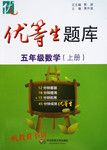题目内容
【题目】假定英语课上老师要求同桌之间交换修改作文,请你修改你同桌写的以下作文。
文中共有10处语言错误,每句中最多有两处。每处错误仅涉及一个单词的增加、删除或修改。
增加:在缺词处加一个漏字符号,(∧),并在其下面写出该加的词。
删除:把多余的词用斜线(\)划掉。
修改:在错的词下面画一横线,并在改词下面写出修正后的词。
注意:1、每处错误及其修改均仅限一词;
2、只允许修改10处,多者(从11处起)不计分。
It was my 18th birthday and I was looking forward to see my friends. I arrived at my favorite restaurant, waiting for him. We would have the special birthday dinner. I looked for a familiar face but failed. Soon the restaurant was filled customers, none of which were my friends. An hour later, I went back home, lonely and disappointed. To my greatly surprise, I found the door was wide open while I arrived home. Nervous, I walked into the dark room. Suddenly, all the light went on and my friends were turned up, shouting 'surprise'. I had an unforgettable birthday.
【答案】1. see → seeing
2.him → them
3. the → a
4.filled后加with
5. which → whom
6. greatly → great
7. while → when
8. Nervous → Nervously
9. light → lights
10. 去掉friends后的were
【解析】
这是一篇记叙文。文章主要讲了作者18岁生日时,作者的朋友给作者举办的一个特殊的生日宴会。
1.考查动名词。根据短语look forward to doing sth.“期待做某事”可知,此处应用动名词作为介词to的宾语,故将see改为seeing。
2.考查代词。分析句子可知,此处应用them代替上文的my friends,作为for的宾语,故将him改为them。
3.考查冠词。句意:我们将举行一个特别的生日晚宴。根据句意可知,此次泛指“一个特殊的生日宴会”,且special是辅音音素开头,应用不定冠词a,故将the改为a。
4.考查介词。此处是固定短语be filled with“充满”,故在filled后加with。
5.考查定语从句。分析就在可知,此处是非限制性定语从句,关系词代替先行词customers在从句中充当of的宾语,应用关系代词whom,故将which改为whom。
6. 考查形容词。分析句子可知,此处应用形容词修饰名词surprise,故将greatly改为great。
7. 考查连词。arrive“到达”是瞬间动词,应用when引导时间状语从句,故将while改为when。
8. 考查副词。分析句子可知,此处应用副词作状语,修饰后面的整个句子,故将Nervous改为Nervously。
9. 考查名词。句意:突然所有灯都亮了,我的朋友都出现了,大声说着“惊喜”。根据句意可知,此处的light意为“灯”,是可数名词,由all判断用复数形式,故将light改为lights。
10. 考查语态。turn up“出现”是不及物动词短语,没有被动形式,故删除friends后的were。

 优等生题库系列答案
优等生题库系列答案